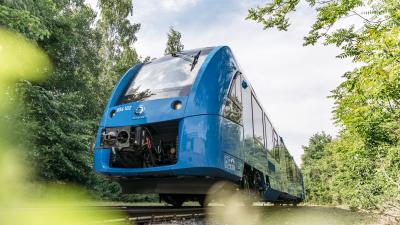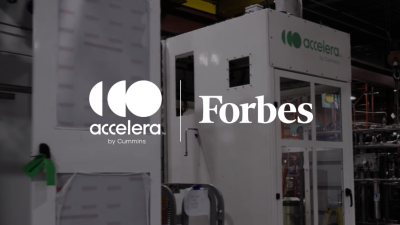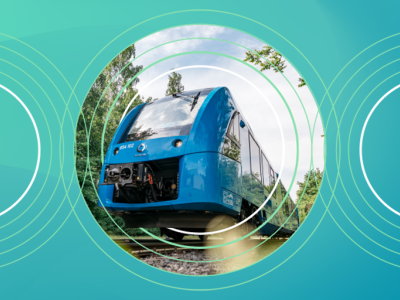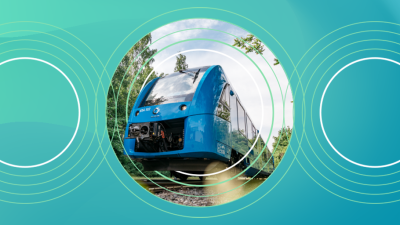Fuel cell demo
North America's first green hydrogen passenger train
Powered by hydrogen fuel cells that emit only water vapor during operation - ensuring a cleaner and quieter environment for passengers and those close to tracks.
Laying the tracks for a sustainable future
Project objectives:
- Revolutionizing transportation: Highlight fuel cell innovation through hydrogen solutions and advancements in traditional modes of rail transportation
- Feasibility showcase: Prove the feasibility of emission-free fuel cell technology in real-world rail scenarios
- Ecosystem development: Showcase the need for dedicated hydrogen ecosystems and evaluate steps for expanding hydrogen propulsion technology in the North American market
- Infrastructure building: Highlight what infrastructure is needed in rail for widespread adoption of zero-emission technologies in the sector
- Collaborative learning: Collaborate closely with partners to learn, engineer, build, test, refine, and evolve clean-energy technology and solutions
What does a hydrogen-powered passenger train look like?
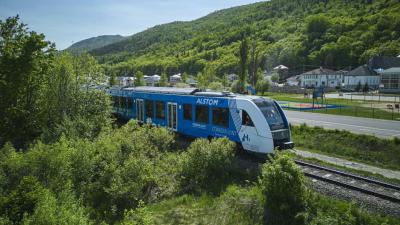
It might look like your average diesel-powered train, but checkout the rooftop – it’s been configured with an innovative “greening” rail package called the iLint Fuel Cell Composition (FCC).
- Six-in-one: 6 Fuel cell power generating modules are combined into a fuel cell composition which combines modules with integrated cooling, ventilation and output regulation and sophisticated software for efficiency, reliability and durability.
- What's inside: The FCC mounts to the roof of the train car and has interface ports for hydrogen fuel supply, electrical connections and communication cabling, to name a few things.
- Energy output: This package provides up to 215 kilowatts of electrical energy for the train’s propulsion.
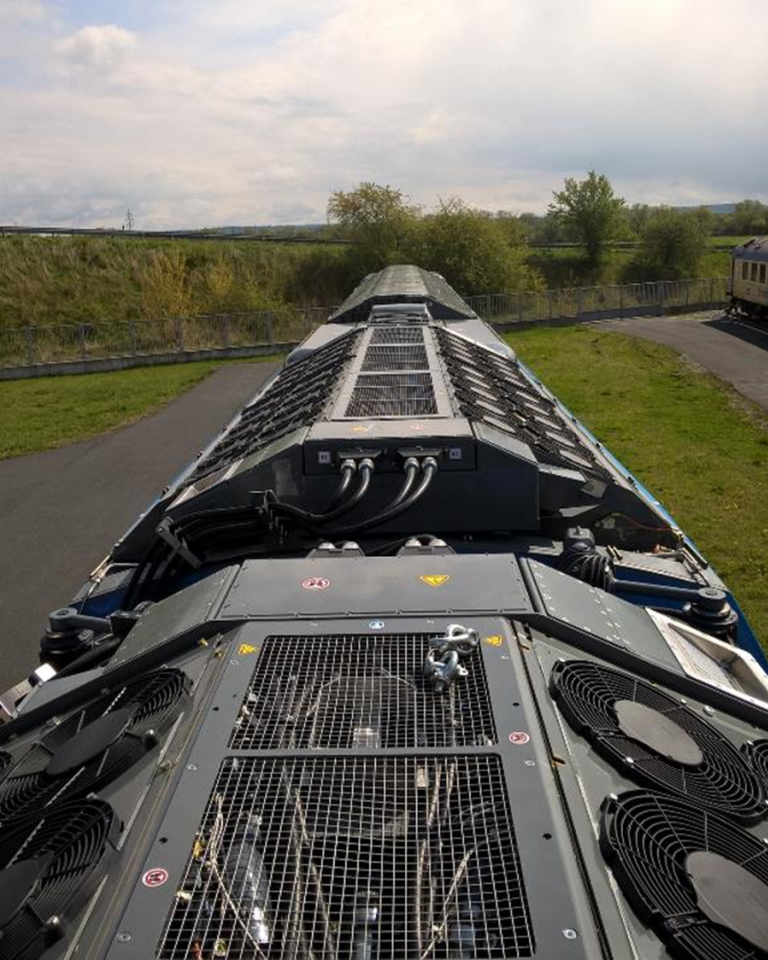
Roof-mounted FCC configuration
- Multiple fuel cells combined into a fuel cell composition
- Shared integrated cooling, ventilation and output regulations
- Combines fuel cell power modules with sophisticated software for efficiency, reliability in high-stress and subzero environments.
Featured technologies
A key element of the project was the utilization of Accelera fuel cells in conjunction with green hydrogen. The roof-mounted fuel cells worked to convert hydrogen into electricity, which powered the train. The green hydrogen used in Alstom’s Coradia iLint train for this demo was produced by an Accelera HySTAT®-100-10 electrolyzer, which is owned and operated in Quebec by project partner Harnois Énergies.
A triumph in
demonstration + environmental impact
Project outcomes:
Successful trial: The Coradia iLint hydrogen-powered train effectively transported over 10,000 passengers in Quebec during a trial period from mid-June to late September 2023, showcasing its operational prowess as an alternative to conventional diesel trains.
Environmental gains: Using a hydrogen-powered train led to significant environmental advantages. Over 8,400 liters of diesel was spared which prevented the emission of 22 tons of CO2! Now that’s a positive contribution to reducing environmental impact!
Holistic hydrogen ecosystem: Together with our partners, we’ve proven a comprehensive, secure, and efficient hydrogen (H2) option for rail travel in North America. This encompasses the entire process from hydrogen production to refueling to the actual operation of the train, demonstrating a holistic approach to sustainable transport.
Strategic progress + planning: The positive outcomes of the demo offer valuable insights for Accelera and our partners. This information is instrumental in strategically advancing the development of hydrogen propulsion technology. Our overarching goal is to encourage the widespread adoption of environmentally friendly transportation solutions in North America.
